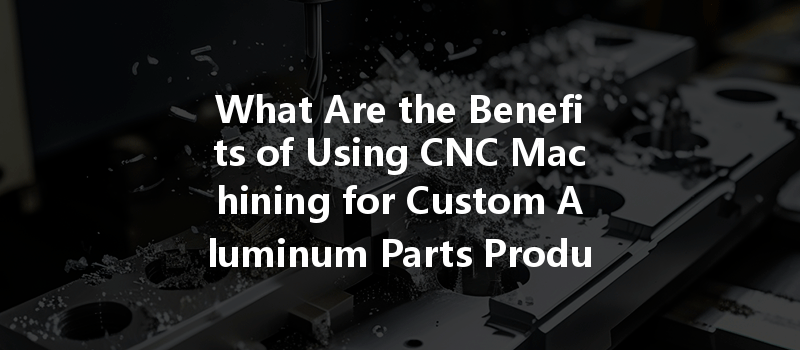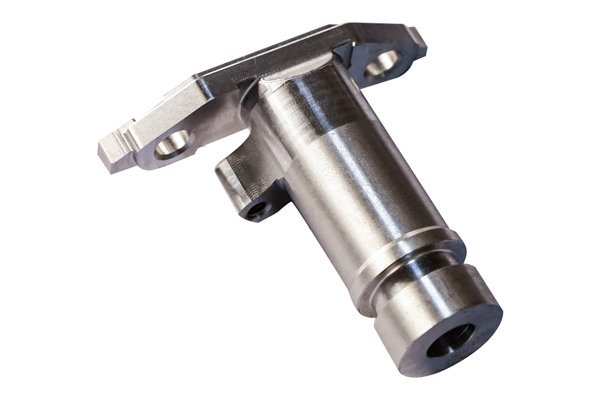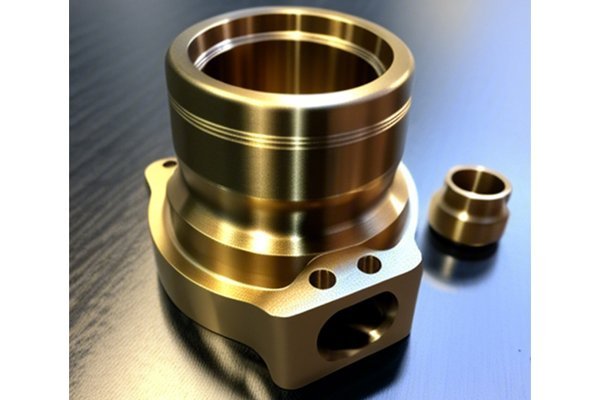Did you know that over 70% of CNC machined components in modern manufacturing are made from aluminum? This lightweight metal is praised for its versatility, durability, and excellent machining characteristics, making it an ideal choice for industries ranging from aerospace to automotive. As manufacturers strive for efficiency, precision, and cost-effectiveness, CNC machining has emerged as a game-changing solution. This article delves into the myriad benefits of utilizing CNC machining for custom aluminum parts production, uncovering how businesses can streamline their processes, reduce costs, and maintain high-quality standards.
Understanding CNC Machining
CNC (Computer Numerical Control) machining refers to the automated control of machining tools via a computer. With CNC technology, manufacturers can produce highly complex and precise parts, which would be nearly impossible to achieve through manual processes. This technology impacts numerous industries, and aluminum, given its exceptional properties, often finds itself at the forefront of CNC machined components.
Before we dive deeper, let’s quickly recap the essential elements of CNC machining. The process generally involves:
This automated process maximizes efficiency and precision while minimizing human error, paving the way for high-volume production.
Understanding the advantages of CNC machining for custom aluminum parts is crucial for manufacturers looking to optimize their operations. Here are some key benefits:
2.1 Precision and Accuracy
One of the foremost challenges in manufacturing is achieving consistent precision across the board. CNC machining offers an unparalleled level of accuracy, capable of producing parts that meet or exceed stringent tolerances. This precision is critical in applications where exact specifications are essential for functionality, such as in aerospace and medical industries.
2.2 Versatility in Design
Aluminum is an incredibly adaptable material that lends itself well to various designs. CNC machining allows for intricate shapes and forms to be achieved easily. Complex geometries that may be difficult or expensive to produce with traditional methods can be manufactured efficiently using CNC technology.
2.3 Efficiency in Production
CNC machining is designed for high-volume production. Once the machine is set up and programmed, it can run continuously with minimal supervision. This contrasts with manual machining processes, which require ongoing human intervention. The result is faster turnaround times and reduced labor costs.
2.4 Reduced Material Waste
In traditional machining, material waste can be significant, particularly if multiple iterations of a part are required to achieve the desired quality. CNC machining optimizes the cutting process, minimizing waste by ensuring that only the necessary material is removed during production. This not only saves costs but also supports sustainable manufacturing practices.
2.5 Enhanced Surface Finish
The finish quality of aluminum parts is crucial for functionality, aesthetics, and corrosion resistance. CNC machining can produce an excellent surface finish, often eliminating the need for additional processes such as polishing or coating. This is particularly advantageous for components that will be exposed to harsh environments.
2.6 Cost-Effectiveness
Although the initial setup and programming of CNC machines may appear costly, the long-term benefits are clear. With reduced labor costs, increased production efficiency, and minimized waste, CNC machining ultimately proves to be cost-effective—particularly for high-volume production runs.
CNC machining finds applications across various industries, each benefiting from the unique properties and advantages of aluminum. Some noteworthy examples include:
3.1 Aerospace Industry
Inquire about any aircraft component, and you’ll likely find aluminum. Its high strength-to-weight ratio makes it ideal for structures where weight savings are critical. CNC machining allows for the production of complex parts such as brackets, housings, and panels, all tailored to stringent regulatory standards.
3.2 Automotive Sector
The automotive industry increasingly shifts towards lightweight materials like aluminum to improve fuel efficiency and performance. CNC machined aluminum parts can be found in engine components, chassis elements, and body structures. Customization options enable manufacturers to produce unique designs that cater to specific vehicle models.
3.3 Medical Devices
Precision is non-negotiable in medical manufacturing, where components must meet strict safety standards. CNC machining provides the accuracy required for producing complex inserts, fixtures, and housings made from aluminum. This ensures compatibility with stringent regulatory requirements and enhances patient safety.

3.4 Consumer Electronics
As the demand for slim designs increases, consumer electronic manufacturers are turning to aluminum for devices that are both lightweight and durable. CNC machining enables precise sculpting of housings and components customized for specific devices, contributing to aesthetic appeal and functionality.
3.5 Robotics and Automation
The rise of robotics and automation technologies demonstrates the need for precision components that can withstand demanding environments. CNC machining provides custom parts designed specifically for every robotic application, from enclosures to brackets and attachment points, improving both functionality and durability.
While the advantages of CNC machining for custom aluminum parts are clear, selecting the right service provider is equally crucial. Here are some factors to consider:
4.1 Experience and Expertise
Look for providers with extensive experience in CNC machining aluminum. An experienced company will understand the intricacies and challenges of working with this metal and ensure quality during production.
4.2 Technological Capabilities
Evaluate the service provider’s technological capabilities. Advanced CNC machines with 5-axis capabilities can provide an added edge in producing complex parts with high precision. Additionally, check if they have the necessary software to handle intricate designs and programming.
4.3 Quality Assurance
Quality assurance processes are vital for ensuring the final product meets specifications. Opt for a service that performs rigorous inspections throughout the production process, employing tools such as coordinate measuring machines (CMM) to guarantee accuracy.
4.4 Lead Times and Flexibility
In today’s fast-paced world, timely delivery is everything. Ask about the provider’s lead times and whether they can accommodate last-minute changes or rush orders. Flexibility in production runs can be a significant advantage.
4.5 Customer Reviews
Customer testimonials can provide insight into the service provider’s reliability and performance. Don’t hesitate to seek references or check for online reviews to ensure you choose a reputable company.
The landscape of CNC machining is continually evolving, driven by technological advancements and the push for increased efficiency. Here are some trends that are shaping the future of CNC machining for custom aluminum parts:
5.1 Automation and Robotics
Automation is revolutionizing CNC machining by reducing reliance on human labor and minimizing human error. Robotic arms are now frequently integrated into CNC setups, streamlining processes that require assembly or finishing.
5.2 Advanced Materials
While aluminum is a staple in CNC machining, new materials are emerging that combine the traits of aluminum with other metals or composites for enhanced properties. Companies that lead in material advancements will meet specific manufacturing requirements and build stronger, more versatile products.
5.3 IoT Integration
The Internet of Things (IoT) is finding its way into machining processes, enabling real-time monitoring and data collection. By connecting machines to IoT platforms, manufacturers can predict maintenance needs, monitor equipment performance, and optimize machining parameters for enhanced efficiency.
5.4 Sustainability Efforts
With increased emphasis on sustainability, manufacturers are looking to reduce their carbon footprint. CNC machining processes that maximize material usage and energy efficiency while minimizing waste are becoming standard. Adopting environmentally friendly practices not only fulfills corporate responsibility but can also lead to significant cost savings.
CNC machining has established itself as an invaluable method for producing custom aluminum parts across various industries. The combination of precision, efficiency, and versatility positions it as the go-to solution for manufacturers aiming to enhance quality while controlling costs. From aerospace and automotive to medical devices and consumer electronics, the applications of CNC machining are extensive and ongoing.
The benefits of CNC machining extend into the realms of innovation, including advancements in automation, material science, and sustainability practices. As manufacturers adapt to evolving market demands and technological developments, understanding these advantages ensures they remain competitive.
In conclusion, CNC machining for custom aluminum parts is not just a trend—it’s a foundational technique that will continue to shape the future of manufacturing. Embracing these practices and innovations can help businesses remain agile and responsive in a world that demands quality, efficiency, and sustainability. Consider integrating CNC machining into your processes and reap the rewards of enhanced production capabilities and a competitive edge.
By recognizing the profound impact CNC machining has on producing custom aluminum parts, readers can appreciate the significance of this technology and its potential to transform manufacturing as we know it. Whether you’re a manufacturer looking to optimize processes or a business owner seeking to improve product offerings, reflecting on the contents of this blog can lead to informed choices that propel your operations forward.






